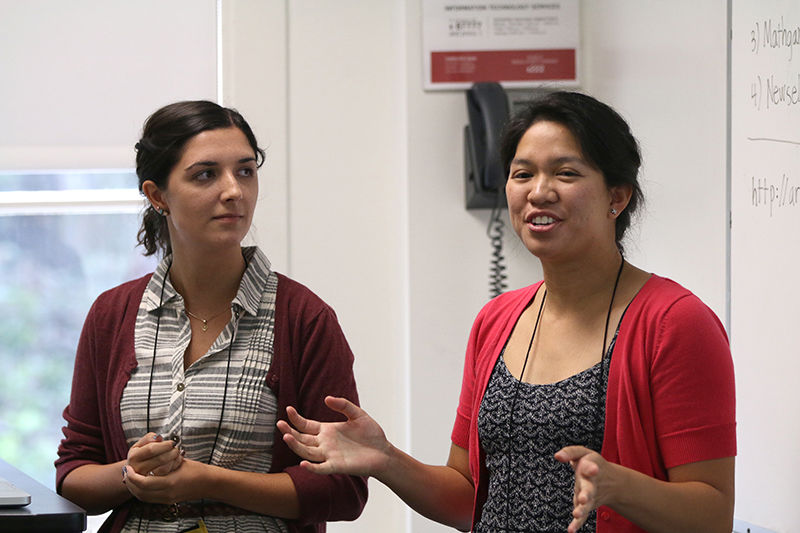From Google Classroom to Pinterest to iOS, this year’s C3 Technology Conferences helped Catholic educators and parish staff learn about how to use digital tools in the classroom and at church.
The conference, in its fifth year, drew around 750 educators and parish staff from across the Los Angeles Archdiocese to the Loyola Marymount University campus Aug. 9-10. Participants attended sessions on a variety of topics, such as social networking safety and “Evangelizing Latino Catholics in Techno Barrios.”
Paul Twomey, who for six years served as president and CEO of ICANN (Internet Corporation for Assigned Names and Numbers), gave the keynote address to kick off the conference. He gave an insider account of the Vatican’s pursuit of the “.catholic” internet suffix, known as a “top-level domain,” or “TLD.” TLDs include suffixes like “.com,” “.org” and “.gov.”
By regulating the “.catholic” TLD, the Vatican could help identify organizations that are authentic representatives of Church teaching, Twomey explained. Yet use of the “.catholic” TLD may be delayed due to recent changes in the Vatican’s communications departments, he said.
“Personally, I think, this top-level domain will be very significant,” Twomey said. Having so many sources claiming to represent the Catholic Church, the “.catholic” suffix can give visitors to sites confidence in the teaching they encounter, he said.
Apple did 10 workshops this year. According to the organizers, the conference has continued to turn out surprising results, all of which have been positive. “Sister Connect,” for example, a program that puts iPads in the hands of religious women, has helped international sisters stay in touch with motherhouses.
“The C3 conference is about reaching, evangelizing and educating,” according to Marge Graf, general counsel for the archdiocese, who was instrumental in founding the conference. “It’s been successful because we’ve brought people to give sessions from a wide variety of disciplines.”
C3 — Catholic Communication Collaboration — is an initiative to expand technology resources throughout the archdiocese that began in 2009.
The conference has “tripled in its offering,” according to Luzanne Otte, who coordinates the ever-growing tech gathering. More than 100 sessions were offered over the two-day conference. While organizers make it a point of offering sessions to help parish staff and educators, the majority of attendees are teachers.
This year also marked the first time Spanish-language courses were offered during every session of the conference, according to Otte.
“It’s a good way to learn what’s new with technology,” according to Alia Perez, a junior high language arts teacher at St. Raphael. “It helps Catholic schools keep up and that benefits our students.”
Peter Scott, vice principal of St. Raphael, has been coming to the conference since it began. Touching base with other Catholic educators in the archdiocese along with conference insights helps teachers keep up with change, he said.
“It opens us up to what everyone else is doing — in the city and the country,” Scott said. “You find new ways to accomplish things.”

